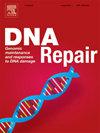一种经济快速的彗星测定和微核细胞组测定法用于蛤蜊遗传毒性生物监测
IF 2.7
3区 生物学
Q2 GENETICS & HEREDITY
引用次数: 0
摘要
彗星测定法或单细胞凝胶电泳法和微核细胞组测定法已在遗传毒性测试和生物监测研究中广泛应用于测量DNA损伤和细胞毒性的方法。分裂细胞中微核和其他细胞异常的相对发生是外源生物诱导的遗传毒性的可靠生物标志物。双壳类以其生物积累能力而闻名,是监测DNA损伤和染色体突变的理想生物指标。本研究主要以叉蛤(Gafrarium divaricatum)为模型生物,对彗星试验和微核试验等遗传毒性试验进行优化和标准化。它强调了使用具有成本效益的机械消化方法从蛤蜊组织中制备细胞悬浮液的潜力,而不是更昂贵的酶消化技术。它还探讨了各种染色技术的应用,以提高微核评分的准确性,解决遗传毒性测定在不同实验室的可变性。通过为这些检测制定一种特定物种的标准化方案,本研究旨在减少实验室间的差异,提高海洋生物(特别是双壳类)遗传毒性检测的可靠性,从而促进监管应用和环境监测。本文章由计算机程序翻译,如有差异,请以英文原文为准。
An economical and rapid method of comet assay and micronucleus cytome assay for genotoxicity biomonitoring using clam, Gafrarium divaricatum (Gmelin, 1791)
The comet assay or single-cell gel electrophoresis and the micronucleus cytome assay have emerged as widely used methods for measuring DNA damage and cytotoxicity in genotoxicity testing and biomonitoring studies. The relative occurrence of micronuclei and other cellular abnormalities in dividing cells is a reliable biomarker of xenobiotic-induced genotoxicity. Bivalves are known for their bioaccumulation capabilities and are ideal bioindicators for monitoring DNA damage and chromosomal mutations. This study focuses on the optimization and standardization of genotoxicity assays, such as comet assay and micronucleus test, using forked venus clam, Gafrarium divaricatum, as a model organism. It highlights the potential of using cost-effective mechanical digestion method to prepare cell suspensions from clam tissues, as opposed to the more expensive enzymatic digestion techniques. It also explored the application of various staining techniques to improve the accuracy of micronucleus scoring, addressing the variability in genotoxicity assays across different laboratories. By developing a species specific standardized protocol for these assays, this investigation aimed to reduce inter-laboratory discrepancies and enhance the reliability of genotoxicity testing in marine organisms, especially in bivalves, thereby facilitating regulatory applications and environmental monitoring.
求助全文
通过发布文献求助,成功后即可免费获取论文全文。
去求助
来源期刊

DNA Repair
生物-毒理学
CiteScore
7.60
自引率
5.30%
发文量
91
审稿时长
59 days
期刊介绍:
DNA Repair provides a forum for the comprehensive coverage of DNA repair and cellular responses to DNA damage. The journal publishes original observations on genetic, cellular, biochemical, structural and molecular aspects of DNA repair, mutagenesis, cell cycle regulation, apoptosis and other biological responses in cells exposed to genomic insult, as well as their relationship to human disease.
DNA Repair publishes full-length research articles, brief reports on research, and reviews. The journal welcomes articles describing databases, methods and new technologies supporting research on DNA repair and responses to DNA damage. Letters to the Editor, hot topics and classics in DNA repair, historical reflections, book reviews and meeting reports also will be considered for publication.
 求助内容:
求助内容: 应助结果提醒方式:
应助结果提醒方式:


